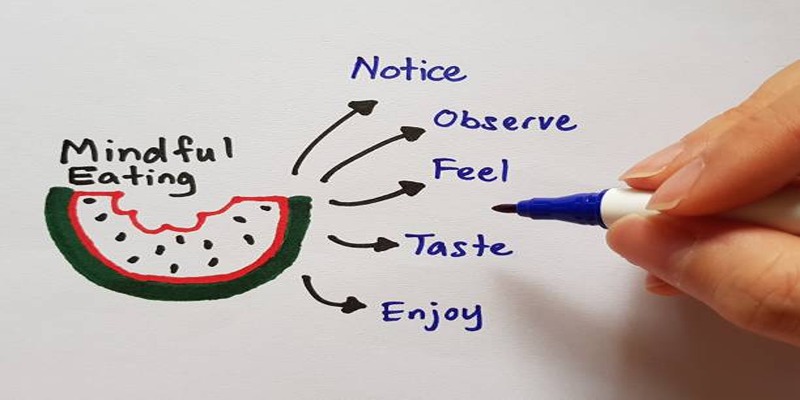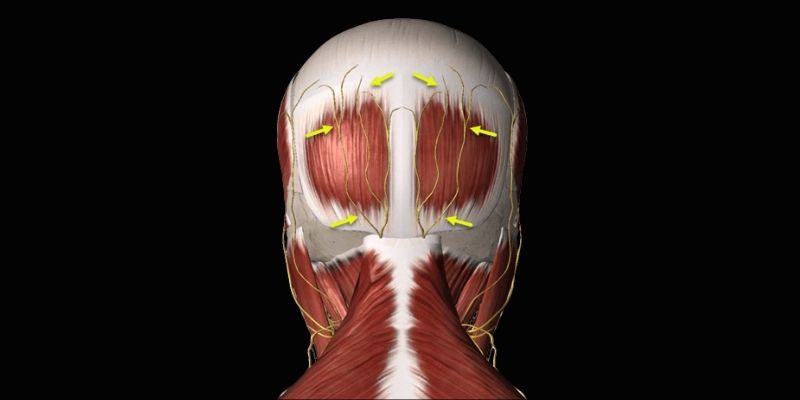Mindful eating is about paying full attention to your food, how it makes you feel, and the signals your body sends. It helps you enjoy meals more and make better food choices. By eating mindfully, you can improve your health, feel happier, and strengthen your connection to what nourishes you. Here are 10 tips to get started!
What Is Mindful Eating?

At its core, mindful eating is the practice of being present while you eat. It’s about engaging all your senses to fully experience the meal. Think of it as meditation, but with food.
But there’s more to it than slowing down. Mindful eating helps regulate portion control, reduces emotional eating, and encourages healthier food choices. According to a 2022 study in the Journal of Behavioral Medicine, participants practicing mindful eating saw notable improvements in their nutrition habits and emotional well-being.
1. Eliminate Distractions
Step away from the laptop and turn off your TV. Eating mindfully starts with clearing distractions. Use mealtime as an opportunity to focus solely on the food in front of you.
Studies from Harvard Medical School indicate that distractions during eating often lead to overeating. By creating a quiet, focused environment, you're more likely to tune into your body's satiety signals.
How to get started
- Silence your phone or switch it to "Do Not Disturb."
- Create a designated eating area that's free from digital devices.
2. Eat Slowly
Chewing slowly does more than improve digestion; it heightens your awareness of each bite. The slower your pace, the better you can appreciate the texture, aroma, and flavor of your meal.
Tip
Put your fork or spoon down between bites. Give yourself the space to breathe, chew, and truly taste the food.
3. Pay Attention to Hunger and Fullness
Before reaching for that midday snack, pause and ask yourself, "Am I truly hungry?" This simple question is a gateway to mindful consumption.
On a hunger scale of 1 to 10, learn to recognize when you’re comfortably full (around a 7 or 8) and avoid eating until you’re overstuffed.
Pro Tip
Keep a journal to note patterns in your hunger cues. Are you hungry or bored? The results may surprise you.
4. Engage Your Senses
Eating is a sensory experience, and the more you tune into it, the greater your enjoyment can be.
Try to engage all five senses while eating:
- Sight: Notice the colors and textures of your food. Take in the presentation on your plate.
- Smell: Before taking a bite, inhale and take in the aromas of your food.
- Touch: Pay attention to how your food feels in your hands or in your mouth.
- Sound: Listen to the crunch, slurp, or sizzle of your meal.
By engaging all of your senses, you are fully present and aware of the experience of eating. This can help you slow down, savor your food, and appreciate each bite.
5. Practice Gratitude
Before digging in, take a moment to appreciate your food. Whether it’s giving thanks for the meal, acknowledging the effort that went into making it, or recognizing the farmers who grew the produce, gratitude shifts your mindset.
Example
Try this before your next meal: Take a deep breath, express gratitude silently (or aloud), and acknowledge how this food will nourish you.
6. Create Balanced Plates
Mindfulness isn’t just about how you eat; it’s also about what you eat. Aim for plates that are colorful, varied, and packed with nutrients. A mix of lean proteins, whole grains, and fresh vegetables can help you feel energized and satisfied.
Simplified Guide
- Fill 50% of your plate with non-starchy vegetables.
- Add a lean protein (chicken, fish, tofu).
- Complete with a portion of whole grains (quinoa, brown rice).
7. Avoid Judgment
Mindful eating is about being non-judgmental towards yourself and your food choices. It’s important to let go of any feelings of guilt or shame around eating and focus on nourishing your body with healthy, balanced meals. Don’t label foods as “good” or “bad,” but instead try to find pleasure in all types of food in moderation.
Tips for Avoiding Judgment
- Practice gratitude for the food you have.
- Let go of restrictions and enjoy treats in moderation.
- Remember that there are no perfect or "right" ways to eat; everyone's needs and preferences are different.
8. Listen to Your Body
Listening to your body's cues and signals is key in finding a healthy relationship with food. This means paying attention to hunger and fullness levels, as well as any cravings or specific dietary needs.
- Eat when you are physically hungry, not just because it’s a certain time of day.
- Stop eating when you feel comfortably full, even if there is still food left on your plate.
- Don’t ignore cravings, but try to understand what your body may be telling you it needs (such as more protein or carbohydrates).
9. Learn About Portion Sizes
Understanding portion sizes can also be helpful in maintaining a healthy relationship with food. Portion sizes can vary greatly between individuals and can also be affected by factors such as activity level and metabolism.
To get a better understanding of what appropriate portion sizes look like, you can use tools such as measuring cups or a food scale to accurately measure out your meals and snacks. This will help you become more aware of how much you are actually consuming and allow you to make adjustments if needed.
You can also visualize portion sizes using everyday objects. For example, one serving of meat is about the size of a deck of cards, while one serving of pasta is about the size of a tennis ball.
Hydrate Mindfully

Water plays a crucial role in digestion and overall well-being. Drink water deliberately, paying attention to the cooling sensation and refreshment it offers.
Reminder
Start each meal with a glass of water to ensure hydration before eating. 11. Practice Breathing Exercises
Before your meal, take a few deep breaths. Deep breathing activates your parasympathetic nervous system, calming your body and preparing it for digestion.
Conclusion
Integrating mindfulness into your meals takes time, but the rewards are worth it. Reduced stress, better digestion, and enhanced enjoyment are just a few benefits you’ll notice. Start with just one or two tips from this list. Before long, eating will no longer feel like an automatic routine but an enriching experience.












